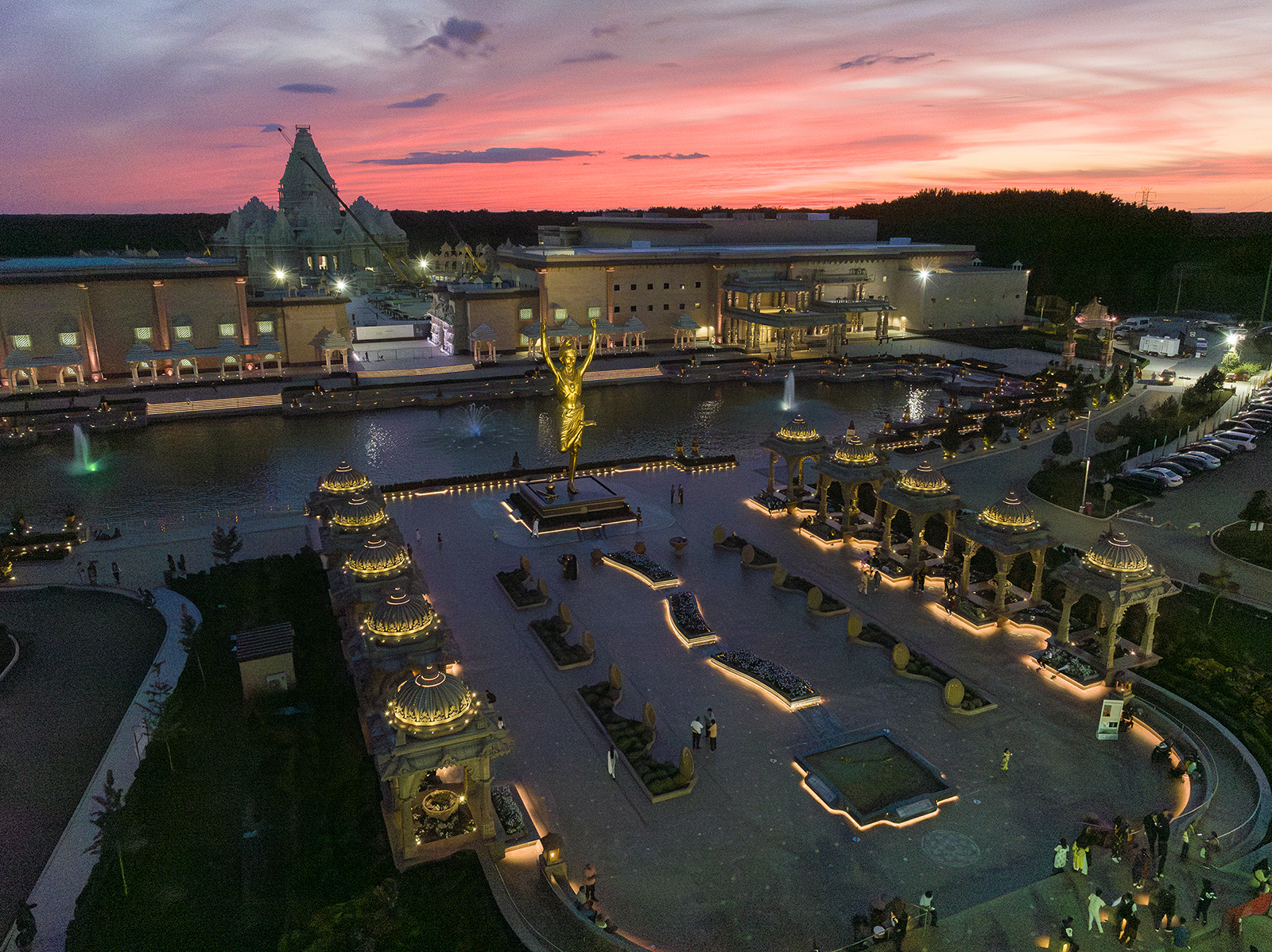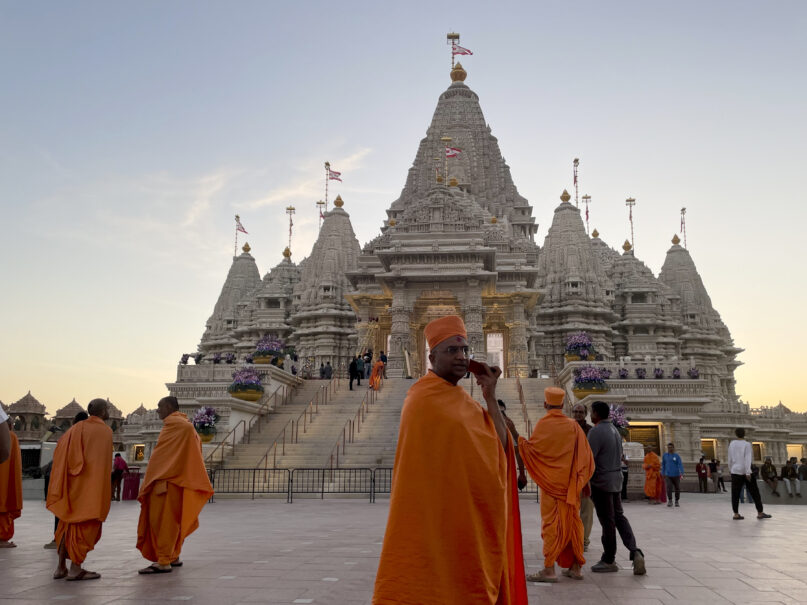(RNS) — Over the weekend, my family celebrated our son’s birthday at the BAPS Swaminarayan mandir in Robbinsville, New Jersey.
We chose the temple for a variety of reasons, including the ease of access for our relatives in both the Philadelphia area and the New York metropolitan region, but the primary purpose of having the birthday there, despite our not being BAPS devotees, was its accessibility to folks who are not Hindu.
The massive and highly ornate BAPS Akshardham mandir, which opened in October on nearly 180 acres of land, is considered the largest Hindu temple in the world. BAPS — short for Bochasanwasi Akshar Purushottam Swaminarayan Sanstha — is a Hindu sect that follows a form of Vaishnavism — the worship of Vishnu — established by the Hindu saint Swaminarayan in the early 1800s. Its followers pride themselves on “practical spirituality,” by which they mean involvement in the world around them.
As a family that has increasingly welcomed non-Hindus as relatives through marriage, one of the great challenges is explaining Hinduism in a way that feels inclusive and not overwhelming. My Mexican-American sister-in-law and my sister’s Trinidadian boyfriend, who was raised in both the Christian and Muslim faiths, felt at home at the temple, marveling at its architecture. We saw BAPS volunteers happily offer guidance and support to anyone needing it, answering questions for groups of visitors.
While the BAPS theology might not be what many Hindus follow, the sect’s approach to temples is something that other Hindu traditions in the United States should consider following, particularly as the demography of Hindu America and the accompanying practices change.
As Anantanand Rambachan and I have previously written, Hindu Americans are increasingly integrated into all facets of American life, yet models of Hindu worship continue to be based on the idea that immigrant Hindus (largely from India, but also Guyana, Trinidad and Sri Lanka) will patronize temples for generations to come just to experience the traditional ritual. That’s becoming more difficult and unrealistic as younger Hindus’ practice is more focused on philosophy and spirituality than ritual. Our temples need to offer more: education, culture and opportunities for socializing.

The BAPS Akshardham temple complex in Robbinsville, New Jersey. (Photo courtesy of BAPS)
What makes the BAPS mandir a compelling example, however, is that there is really nothing new in its model. For centuries in South and Southeast Asia, temples were cultural centers, places of learning, exchange and interaction among different groups. The destruction of some Hindu temples in parts of South Asia by Muslim rulers or Portuguese may have contributed to their decline as cultural centers, but the Hindu community’s own negligence in continuing to maintain temples as open places of learning and worship is also an important part of how that model declined.
The Robbinsville BAPS mandir reimagines the Hindu temple as a place where sect devotees and other Hindus from outside of these traditions can come. But it has become a community destination, where people of all different backgrounds can engage with theology, culture and a sense of community.
I saw that firsthand during our son’s birthday visit, with non-Hindu patrons of different ethnicities and religions who not only took part in the “aarti,” or religious celebration, but walked around in amazement at the sprawling Akshardham campus. Members of other faith and ethnic groups took part in the bathing of the murthis (statues) and were able to get guided tours explaining the philosophical components of Hindu worship, some of which many Hindus themselves have trouble understanding.
There are other Hindu temples that have embraced this model as well, including the Hindu Temple of Minnesota, based in Maple Grove, and the Sri Siva Vishnu Temple in Lanham, Maryland, just outside of Washington. Their openness has also energized younger volunteers, who are empowered to lead tours, show their friends how they worship and destigmatize Hinduism in a way that my generation never could.
Perhaps the BAPS mandir and other temples can articulate a new way to make Hinduism as open in practice as it is in philosophy.
(Murali Balaji is a journalist and a lecturer at the Annenberg School for Communication at the University of Pennsylvania. His books include “Digital Hinduism” and “The Professor and the Pupil,” a political biography of W.E.B. Du Bois and Paul Robeson. The views expressed in this commentary do not necessarily reflect those of Religion News Service.)





